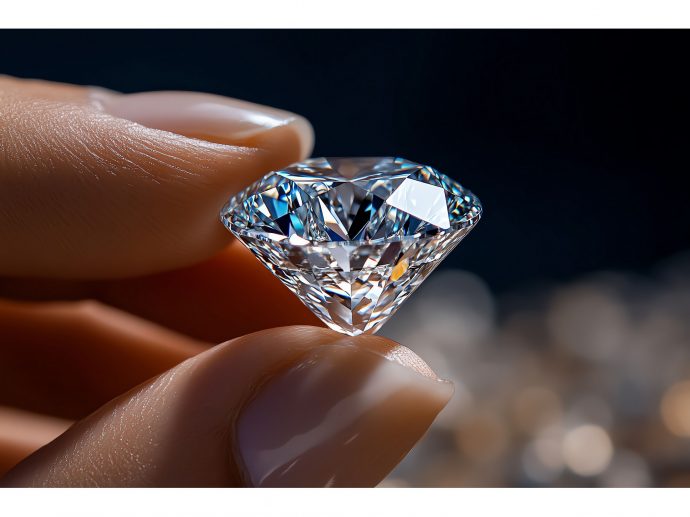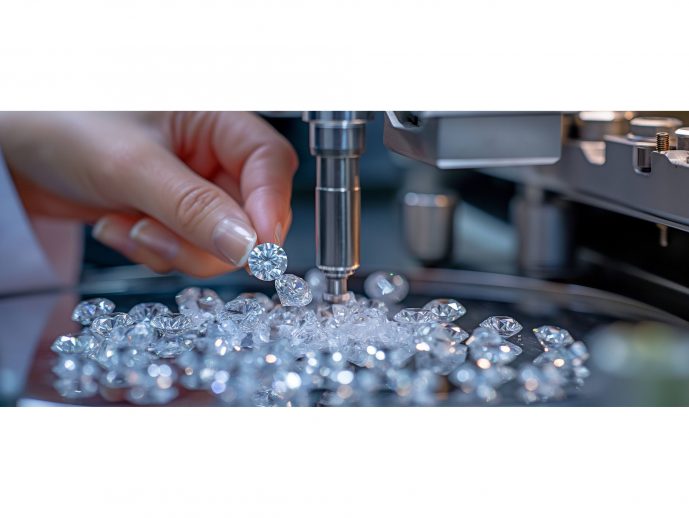Categories more
- Adventures (17)
- Arts / Collectables (15)
- Automotive (37)
- Aviation (11)
- Bath, Body, & Health (77)
- Children (6)
- Cigars / Spirits (32)
- Cuisine (16)
- Design/Architecture (22)
- Electronics (13)
- Entertainment (4)
- Event Planning (5)
- Fashion (46)
- Finance (9)
- Gifts / Misc (6)
- Home Decor (45)
- Jewelry (41)
- Pets (3)
- Philanthropy (1)
- Real Estate (16)
- Services (23)
- Sports / Golf (14)
- Vacation / Travel (60)
- Watches / Pens (15)
- Wines / Vines (24)
- Yachting / Boating (17)
Investing in Diamonds: 7 Expert Tips
Published
09/23/2024Diamonds have captivated humanity for centuries with their luxurious beauty and perceived value. Beyond their role in jewelry, these precious gems have come up as a unique investment opportunity for those looking to diversify their portfolios.
Statista shows that the global diamond jewelry market reached USD$86.5 billion in 2022, emphasizing the continued demand for these glittering stones. For potential investors, this presents both opportunities and challenges.
The diamond market's complexity, coupled with the need for expertise in evaluating gem quality, makes it crucial to prepare yourself with the complete information beforehand. This article has compiled some expert tips to guide you through the intricacies of investing in diamonds, helping you make informed decisions and potentially reap the rewards of this sparkling market.
Prioritize Research and Education
Don't invest right away. You've got to educate yourself first, and thoroughly at that. This means understanding market trends, pricing structures, and the myriad factors that affect a diamond's value.
Start by exploring reputable industry publications, attending gemology courses, and consulting with diamond experts. These resources will help you build a strong foundation of knowledge, enabling you to make informed decisions when it's time to invest.
Don't forget to learn about diamond selling as well. Knowing how to exit your investment is just as crucial as knowing how to enter it. That said, familiarize yourself with various selling channels. For one, there are companies offering cash for diamonds. Experienced and reputable ones can authenticate in as fast as seconds, meaning you can almost instantaneously get a hold of your money. Other options include auction houses, private buyers, and diamond exchanges.
Furthermore, stay updated on global economic factors that can impact diamond prices, such as supply and demand fluctuations, geopolitical events, and changes in customer preferences. When you continuously educate yourself, you'll be more prepared to deal with the complex world of diamond investing and potentially maximize your returns.
Only Work With Reputable Dealers
When you're ready to make a purchase, it's crucial to work with reputable dealers. Search for those certified by organizations like the Gemological Institute of America (GIA) or the American Gem Society (AGS). These credentials ensure that you're working with professionals who adhere to strict ethical standards and have extensive knowledge of diamonds.
Working with reputable dealers also gives you access to high-quality diamonds and expert advice. These professionals can guide you through the intricacies of diamond selection, helping you make informed decisions based on your investment goals.
Opt for Certified Diamonds
Always opt for certified diamonds when investing. Certification from recognized laboratories like GIA or AGS provides an unbiased assessment of a diamond's quality. This badge serves as a guarantee of the diamond's characteristics and can hugely impact its resale value.
The importance of certification goes beyond pricing. It gives a detailed analysis of the diamond's 4Cs (cut, color, clarity, and carat weight), as well as other important characteristics. This information is crucial for both initial valuation and future resale.
Diversify Your Diamond Investments
Just as with any investment portfolio, diversification is key when investing in diamonds. Consider purchasing diamonds of different sizes, colors, and qualities. This approach can help mitigate risk and potentially increase your returns over time.
Diversification in diamond investing can take many forms. You might consider a mix of colorless and fancy colored diamonds, or a range of carat weights. You may also diversify by investing in both loose diamonds and high-end diamond jewelry.
Be Aware of Trends
While it's vital to stay informed about market trends, be cautious about making investment decisions based solely on current fads. The diamond market can be volatile, and what's popular today may not hold its value in the long term. So, focus on timeless qualities that have consistently held value over the years.
Recent market data illustrates this volatility: one Global Rough Diamond Price Index reported that diamond prices had fallen by 18% from their peak in February 2022. This punctuates the importance of a long-term perspective when investing in diamonds.
Consider Fancy Colored Diamonds
Although colorless diamonds are traditionally popular, fancy colored ones have seen a boost in demand in recent years. These rare gems, which come in colors like blue, pink, and yellow, can command premium prices.
The rarity of these diamonds contributes significantly to their value. For instance, only one in 10,000 diamonds possesses a fancy color, with blue and red being the rarest. Pink diamonds, in particular, are exceptionally scarce. It's worth noting that until its closure in 2020, the Argyle mine in Western Australia produced approximately 90% of the world's pink diamonds. This rarity has led to remarkable price appreciation.
Stay Informed About Industry Developments
The diamond industry is constantly evolving, with new technologies and market trends emerging regularly. Stay informed about developments such as lab-grown diamonds, which are becoming increasingly popular and could impact the market for natural diamonds.
Recent market analysis suggests a bright future for this sector. In 2023, the lab-grown diamond market was valued at approximately USD$13 billion. Looking ahead, industry experts project significant growth, with some forecasts suggesting the market could reach nearly USD$22 billion by 2030. This rapid expansion underscores the importance of staying informed about both traditional and emerging segments of the diamond industry when considering investments.
Takeaway
Investing in diamonds offers a unique opportunity to diversify your portfolio, but it's not a decision to be taken lightly. You must also remember that diamond investing is a long-term strategy. While the potential rewards can be significant, they often take years to materialize. By combining thorough research, careful selection, and a steady approach, you can potentially add a valuable and glittering asset to your investment portfolio.
















